 |
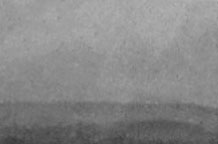 |
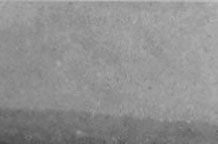 |
 |
 |
 |
 |
 |
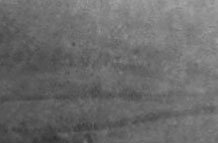 |
 |
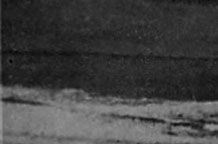 |
 |
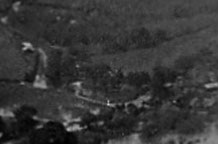 |
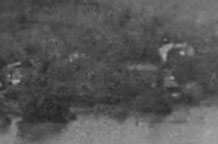 |
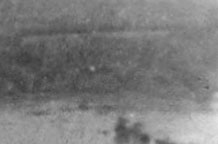 |
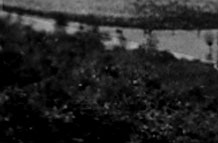 |
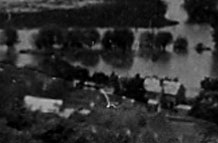 |
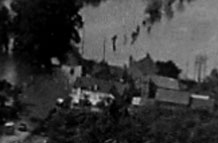 |
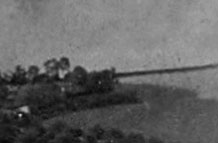 |
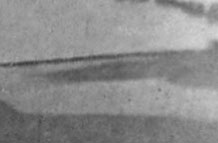 |
 |
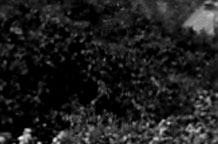 |
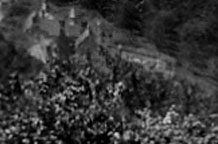 |
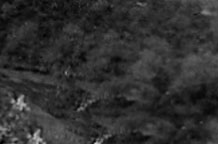 |
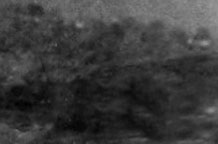 |
This almost aerial photo from Ankerdine Hill shows the devastation the floods at Knightwick could and do cause (Date of photo possibly early 1900's).John Ogilby, in the 15th century refers to a Wooden Bridge. Celia Feinnes in 1698 refers to a stone bridge at Knightwick. The modern bridge and new road opened in 1958. The original road crossing was by the Talbot Hotel, which dates from the late 16th century but which was re-fronted with brick in the 18th century.
The scenery of the valley where the River Teme has broken its way through the hills is very beautiful. The hills are usually rounded and wooded, but in places precipitous cliffs fall straight to the river as at Rosebury Rock. (Now called Osebury Rock) To the north are some old brickworks.
The north of the parish lies in the valley of the Teme, but the land rises rapidly to the south, reaching a height of 400 ft. above the ordnance datum at the south-eastern boundary.
In 1905 Knightwick contained 290 acres of arable land and 487 of permanent grass. The subsoil is Keuper Sandstone, the soil loam, clay and marl, producing crops of wheat, beans, fruit and hops.Amongst the manors said to have been freed for the monks of Worcester by King Edgar in 964 from all royal exactions Knightwick was included. At this time and in 1086 it formed part of the manor of Grimley, and so was probably included in the grant of Grimley to the church of Worcester by Beorhtwulf, King of Mercia, in 851. The manor was assigned to the support of the monks, and had been leased by them to a certain Eadgyth, a nun, who held it, performing the services due for it, as long as the brethren could dispense with it. In the time of King William, however, their number increased and Eadgyth restored the manor to them. She was living at the time of the Domesday Survey and was willing to testify to this. At the time of the Survey, however, the hide of Knightwick was in the hands of Robert le Despenser, brother of Urse the Sheriff. This hide rendered in the manor of Grimley sac and soc and all services due to the king.
Like most of the rest of Robert's possessions in Worcestershire, Knightwick passed to Walter de Beauchamp, son-in-law of Urse the Sheriff.
The overlordship remained with Walter's descendants the Earls of Warwick, the manor being held of their honour of Elmley, but the overlordship is not mentioned after 1325.
Walter de Beauchamp apparently held the manor in demesne in the time of Henry I. From this time until about 1280 the history of the sub-tenants of this manor is very obscure. In 1220–1 John Clerk and his sister Julia released to Henry Fitz Ralph all their claim in a virgate of land at Knightwick, and in 1255 Auda widow of Godfrey de Gamages granted the manor of Knightwick to William de la Were. William died in 1269, and his brother Peter succeeded to the estate, which he apparently held in 1274–5. These deeds do not appear to refer to the capital manor of Knightwick, which was probably already in 1274–5 in the possession of the Prior of Great Malvern. The prior probably derived his title from the family of Mans, who held the chapel of Knightwick in the 12th century and endowed the priory of Little Malvern with land at Knightwick towards the end of that century.
Simon de Mans, the benefactor of Little Malvern Priory, had two sons Walter and William. Walter, the elder son, had a son William, who died childless, a daughter, Avice wife of Bartholomew Marshall, and a second daughter, who married Walter Mapnor and had a son Walter. The estate at Knightwick evidently passed to the Mapnors, and was given by Walter de Mapnor or his daughter Lucy to the Prior of Great Malvern before 1274–5. Lucy apparently still lived at Knightwick or held some estate there in 1280, for she paid 12d. in that year towards the lay subsidy, while the Prior of Great Malvern paid 20s. In 1283 the manor was given by the Prior of Great Malvern to Bishop Godfrey Giffard in compensation when the title of Westminster to Great Malvern was finally settled.
The bishop leased the manor in 1318 to Master Peter Fillol, rector of the church of Martley, and in 1324–5 to John Collan for life. It was again leased in 1336 for the lives of William de Massington and Agnes his wife. In 1460–1 the bishop leased the site of the manor to Thomas Romney of Lulsley, Isabel his wife and John their son for a term of seventy years.) The manor was valued at £8 in 1535. It was confiscated by Edward VI on Bishop Heath's deprivation in 1552 and was granted in the following year to Lord Robert Dudley and his heirs and William Glasyer. Lord Robert Dudley was attainted and sentenced to death in the same year for taking the part of Lady Jane Grey, and though he was pardoned in October 1554 this manor seems to have remained in the Crown until 1560. It was among the manors taken from the bishopric by Queen Elizabeth under the Act of 1558–9, which enabled her to take into her hands certain of the temporalities of any bishopric which fell vacant, recompensing the value with parsonages impropriate.
Lord Robert Dudley was restored in blood in March 1557–8 and created Earl of Leicester in 1564. The manor of Knightwick must have been restored to him, and his and William Glasyer's interest passed to Sir Richard Sackville, whose son Thomas Sackville Lord Buckhurst sold the manor in 1568 to Lancelot Romney. Lancelot died seised of it in 1595, when it passed to his son John, to whom livery was made in 1605. It was probably this John who was outlawed for felony and murder in January 1628. By an inquisition taken in 1630 it was found that John on the day of his outlawry was seised for life of a capital messuage and land in Knightwick. This estate was granted in September 1630 to Thomas Cooke during the lifetime of John Romney. John was evidently restored, for he died seised of the manor about 1640, when it passed to his son Lancelot. Lancelot died in 1643, leaving a son John, aged eleven, and three years after the estate was sequestered for Lancelot's delinquency in arms. In 1648 John Evett, grandfather and guardian of John Romney, begged to compound for the estate, but before the sum could be raised Evett was imprisoned for debt in Worcester Castle. The guardianship of the child passed to Henry son of John Evett, and he in March 1651 offered to pay the debt. When Charles came to Worcester in 1651 John Romney joined his standard, under compulsion, as he stated, by the Scotch soldiers quartered at his uncle's house. Though he did not take part in the battle his estate was forfeited, and when in 1659 his property was ordered to be sequestered for his complicity in Sir George Booth's rising it was found that it was already sequestered for his engagement with the Scots.
In 1666 John Romney and Elizabeth his wife, William Robbins and John his wife, Henry Evett and Francis Powle sold the manor of Knightwick to Thomas Foley. His grandson Thomas Foley was created Lord Foley of Kidderminster in 1712, and the manor descended with the title until 1830 or later. It must soon after have been purchased by John Williams of Pitmaston, from whom it passed under a settlement made in 1838 to his son Francis Edward Williams. He was lord of the manor until his death in 1885, when the estate passed to his son John Francis, who assumed the additional surname Greswolde. He died without issue in 1892, having devised the manor to his nephew Francis Wigley Greswolde Greswolde-Williams of Bredenbury Court, Herefordshire.
©peh

